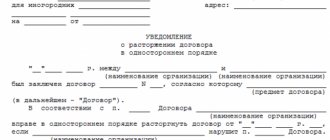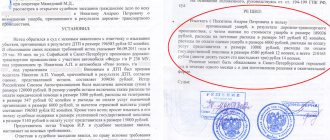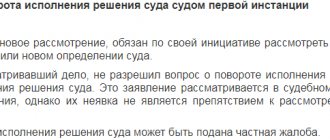Home/Complaint/Dirty cleaning ruined an item
When regular home washing fails to remove stubborn stains, people turn to dry cleaning services. The number of such organizations is growing every day, but not all of them can provide quality service. Therefore, it is important to give away an item after choosing a company in advance, based on reviews from former clients, and you should not go to the first dry cleaner you come across.
There are often cases when dry cleaning spoils a client’s item. And then, many people have a question: is it possible to return the money spent on dry cleaning and whether the organization must, by law, reimburse the damaged item? To answer these and subsequent questions, it is necessary to analyze the situation in detail.
Attention! If you have any questions, you can chat for free with a lawyer at the bottom of the screen or call Moscow; Saint Petersburg; Free call for all of Russia.
Normative base
If a poor-quality service is provided or a product is damaged, a citizen’s rights can be restored by referring to:
- Civil Code of the Russian Federation;
- Law on Consumer Protection";
- Rule of consumer services for the population;
Attention
The client may well demand a refund of the cost of dry cleaning and monetary compensation for the damaged item. If the product is so badly damaged that it cannot be used for its original purpose, then the organization must pay its cost twice as much.
All requirements for dry cleaning must be satisfied within three days from the date of application. If there is no answer, then you need to go further and write complaints to higher authorities.
Sample statement of claim against dry cleaning
To Leninsky District Court
Ekaterinburg
Plaintiff:
Respondent:
State duty: exempt from payment on the basis
pp. 4 clause 2 and clause 3 art. 333.36 of the Tax Code of the Russian Federation,
as well as paragraph 3 of Art. 17 of the Law of the Russian Federation “On the Protection of Consumer Rights”
STATEMENT OF CLAIM
on the protection of consumer rights to dry cleaning
On January 31, 2012, a gray sheepskin coat belonging to the plaintiff was handed over to the dry cleaner-laundry “Jaguar”, owned by IP M. The defendant was required to provide dry cleaning and dyeing services for the plaintiff's sheepskin coat. The service was paid for using a Groupon discount coupon 4128872/36691, the cost of which was 950 rubles, and an additional 300 rubles were paid when taking the item to the dry cleaner.
The item was purchased on 01/18/2011. The period for wearing the product is from 01/18/2011 to 03/15-20/2011, from 12/01/2011 to the date of acceptance into the defendant’s organization. Upon acceptance of the product, minor contamination was noted on the bends of the sleeves and in the area of the pockets; the level of wear was determined to be 50%.
When the item was first returned from dry cleaning, the following defects were discovered: the leather of the sheepskin coat became thinner, took on a washed-out appearance, especially in the pocket area, there were brown stains on the cuffs and shoulders, pieces of leather began to differ from each other in color, the texture changed - the “velor” layer was missing " The item acquired an unpleasant odor, the fur on the collar became matted, the collar was wrinkled, and the pockets were bulging. The sheepskin coat has lost its appearance. The plaintiff’s mother received the item from the dry cleaner, but due to her age, poor eyesight and insufficient lighting at the place where the items were picked up from the dry cleaner, she did not notice the above-described shortcomings. The receptionist also took the original receipt and did not provide a copy.
Having discovered defects on the product after dry cleaning, the plaintiff contacted the Defendant again. It turned out that in violation of the terms of service, the sheepskin coat was not painted. The item was taken back for painting. The deadline for readiness was determined to be 03/07/2012, in fact the deadline turned out to be 03/13/2012. The plaintiff also requested a receipt, and she was given a copy.
When the item was returned again, shortcomings were also discovered: the sheepskin coat was painted dark brown, while the item’s own color was gray - the plaintiff did not give consent to change the color, some areas of the item were not painted, the dyeing was done unevenly, parts of the item differ from each other color, the skin has lost its softness, there are creases on the forearms. As a result of dry cleaning and painting, the item was irreversibly damaged. I believe that the item was not painted at all in the end.
In connection with the above, on March 28, 2012, the plaintiff sent a claim to the management of the dry cleaning company, IP Myltsev D.V., with demands to return the cost of poor-quality service provided in the total amount of 1,250 rubles, and to reimburse double the cost of the damaged item in the amount of 50,726 rubles 30 kopecks (the price of a sheepskin coat is 25,363.15 rubles).
In response to the plaintiff’s claim, the defendant did not acknowledge the demands and voluntarily refused to satisfy them. He also expressed an opinion about the suitability of the item and the performance of the service in accordance with GOST. The plaintiff turned to the “Corporation of Independent Experts” to conduct commodity research in order to establish the compliance/non-compliance of the appearance of the sheepskin coat after dry cleaning with the requirements of technical standards. In the conclusion of a specialist expert dated December 2, 2012, it was concluded that based on the results of the study, taking into account the pronounced heterogeneity of the coloring of the product, the dry cleaning and painting services provided do not meet the requirements of GOST R 51108-97.
In accordance with Art. 4 of the Law of the Russian Federation “On the Protection of Consumer Rights”, the contractor is obliged to perform work, provide a service, the quality of which corresponds to the contract, in the absence of conditions in the contract on the quality of work, service, the contractor is obliged to perform work, provide a service suitable for the purposes for which the work, This type of service is commonly used.
When accepting the plaintiff's sheepskin coat for dry cleaning, the defendant did not warn the plaintiff about all the necessary special properties of the sheepskin coat, which could lead to its complete or partial loss (damage). Chemical cleaning must be carried out without violating the requirements of GOST R 51108-97. However, these requirements were violated. In particular, clause 5.2 – the presence of the smell of solvent and stain removers, clause 5.3 – the color and original shape of the product are not preserved, clause 5.4 – there are creases on the product, clause 5.7 – the product made of natural fur has not retained its original shape and shine .
Thus, I believe that the defendant should compensate twice the price of the damaged item.
USEFUL: watch the video and find out why it is better to draw up any sample claim or complaint with our lawyer, write a question in the comments of the video, subscribe to the YouTube channel
According to Art. 29 of the Law “On the Protection of Consumer Rights”: “the consumer has the right to refuse to fulfill the contract for the performance of work (provision of a service) and demand full compensation for losses if, within the period established by the specified contract, the shortcomings of the work performed (service provided) are not eliminated by the contractor. The consumer also has the right to refuse to fulfill the contract for the performance of work (provision of a service) if he discovers significant deficiencies in the work performed (service provided) or other significant deviations from the terms of the contract.”
Since IP Myltsev did not fulfill his obligations for high-quality dry cleaning and painting, to eliminate deficiencies after my appeal, I consider it possible to refuse to fulfill the contract and demand reimbursement of the cost of the service and double the cost of the sheepskin coat. The claim with the specified requirement was transferred to the defendant on March 28, 2012. By letter dated April 11, 2012, the defendant denied my demands.
Consequently, at present the amount of the penalty is equal to the amount of the order, namely 1,250 rubles.
Based on the above, guided by art. 4, 7, 15, paragraph 1, Art. 35, paragraph 6 of Art. 13 of the Law of the Russian Federation “On the Protection of Consumer Rights”, paragraph 1 of Art. 732 of the Civil Code of the Russian Federation, Art. 98, 100 of the Civil Procedure Code of the Russian Federation, paragraph 46 of the Resolution of the Plenum of the Supreme Court of the Russian Federation dated June 28, 2012 N 17 “On the consideration by courts of civil cases in disputes regarding the protection of consumer rights”
Ask:
- To recover from IP Myltsev D.V. in favor of Sh. double the price of a sheepskin coat in the amount of 50,726 rubles 30 kopecks.
- To recover from IP Myltsev D.V. in favor of Sh. the cost of poor-quality services provided in the total amount of 1250 rubles.
- To recover from IP Myltsev D.V. in favor of Sh. for compensation for moral damage in the amount of 20,000 rubles.
- To recover from IP Myltsev D.V. in favor of Sh. the costs of paying for the services of a representative in the amount of 10,000 rubles, the costs of paying for a commodity examination in the amount of 1,500 rubles, the costs of drawing up a notarized power of attorney in the amount of 1,000 rubles.
- To recover from IP Myltsev D.V. in favor of Sh. a penalty in the amount of 1,250 rubles.
- To recover from IP Myltsev D.V. in favor of Sh. a fine in connection with his failure to voluntarily fulfill consumer requirements in the amount of 25,363 rubles 15 kopecks
Date, signature
Attention: watch a video on the topic - how to protect your consumer rights, and also subscribe to our YouTube channel so as not to miss useful information and the opportunity to consult a lawyer for free:
Actions to take if items are damaged at the dry cleaners
Before handing over the item to the dry cleaner, the acceptance receipt must be issued in accordance with the rules.
Must be indicated:
- legal address of the organization;
- last name, place of residence, telephone number of the client;
- type of work provided;
- description of the product down to the smallest damage and defects;
- date and time of receipt of the product;
- expected order execution time;
- price for the service provided;
- It is advisable to enter the cost of the item itself;
- list all removable elements from the item (belt, collar, etc.);
It is important to be vigilant and not sign anything on the receipt if something is unclear or incomprehensible. Otherwise, when a claim is made, justice will be on the side of the organization.
IMPORTANT
The receiver, when assessing an item if it is unsuitable, must warn about all possible consequences. If he did not do this, then in case of damage, the blame falls entirely on the dry cleaning employee.
If a defect is detected on an item:
- you cannot sign the receipt;
- it is necessary to require the drawing up of a bilateral act with a thorough listing of the existing shortcomings;
- the act should indicate the cost of the product in its original form and insist on compensation in double amount;
Additional information
In the event that defects were discovered after the customer left the dry cleaner, the right to compensation remains valid only if invisible defects could not be detected at the time of acceptance of the item. You can request compensation within two years after dry cleaning. During this time, the company is responsible for the services provided. If the damage to the product was caused by chemical treatment, the customer can file a complaint against them.
If the consumer has signed a document stating that he is completely satisfied with the dry cleaning and has no complaints, further proceedings will no longer be justified.
You can receive compensation in the following ways:
- having tried to come to an agreement with the director of the organization;
- by writing a complaint and sending it to the service center;
- by requesting a final report on the activities performed;
The dry cleaner is also responsible for the safety of items. If the product is lost, the company must fully refund its cost or provide the customer with a similar product.
For your information
There are cases when an organization tries to avoid liability illegally by falsifying receipts, using force and pressure. The client must not give in to threats; it is necessary to record a case of offense and immediately go to court.
Dry cleaning
Today, no one is surprised by the presence of a washing machine in the house: it is profitable, simple, and most importantly, convenient. However, there are situations when it is simply impossible to do without the help of professional cleaning. An expensive item made of delicate material or just your favorite clothes that you would be sorry to part with because of one small but bright spot - all this is a reason to contact a professional dry cleaner.
However, there are situations when the consumer, being confident in the validity of such a measure, ends up with something completely different from what he expected. Changes in the shape of clothing, fading of fabric or defects on it - all this can cause his indignation.
Fortunately, Russian legislation protects consumers from organizations that treat the interests of their clients carelessly.
On the other hand, entrepreneurs and other small businesses acting in good faith also have the right to protect their interests from unscrupulous clients.
It is no secret that in the age of a developed market economy, more and more people are appearing who want to “spoil” the reputation of honest entrepreneurs. Various guarantees of consumer rights are used by the latter in order to receive services for free or, even worse, to compensate for the harm they have imagined.
All this creates a dangerous customer base for a competitive market called “consumer extremists.” Both the financial situation and the business reputation of decent organizations suffer at their hands.
Procedure The established procedure for conducting and considering a certain case (an example would be a judicial procedure) for the legal protection of rights involves a fairly large number of nuances that, without special knowledge, may simply go unnoticed. It is necessary to pay maximum attention to all legal provisions that contain ways to protect your rights.
Consumers should know when going to dry cleaning
When a client comes to a dry cleaner, the latter is obliged to warn him about all the possible consequences of chemical washing and tell him what type of cleaning will be most suitable for the corresponding material.
The basis for holding the organization liable arises if the service personnel did not inform you about this.
The exception is cases when the special properties of the transferred clothing could not be detected upon proper acceptance of the item.
For example, such situations include cases when the tag on which the material of the clothing is indicated contains inaccurate or distorted information: the manufacturer did not include the presence of wool in it, so the staff could not select the appropriate washing mode. As a result, the item may suffer, but not through the fault of the organization.
If you take it to the dry cleaner, sign the acceptance certificate
At the stage of receiving the clothes, the contractor should draw up an act of acceptance of the transfer of the item. It is necessary to pay close attention to all the details of the clothing received from the customer: name, color, defects, detachable parts, accessories, and so on.
This procedure can protect the dry cleaning contractor from unreasonable demands from clients. Often, all of the above properties are listed on the receipt, which is also an acceptable document.
Receiving clothes after dry cleaning
The customer must carefully check all elements of clothing immediately at the time of its acceptance (not at home, but directly from the contractor). Otherwise, he will be able to make claims related to deficiencies in the work performed only if it is impossible to detect them on site.
The dry cleaner did not clean the item
If the consumer notices any shortcoming in the work performed (stain persistence, absence of any items of clothing or damage), he should draw up a two-sided complaint statement, in which he must indicate all the shortcomings found on the item.
No matter how strange it may seem, the contractor is recommended to pursue exactly the same goal: conducting the most thorough check by the client of the item transferred back to him. Demand that he verify the proper quality of service, because all possible conflict situations are best resolved “on shore.”
Damaged item after dry cleaning - preparing a claim
If the contractor is not ready to solve the problem or does not admit his guilt at all in the poor-quality service provided, then the consumer should write a complaint. To do this, he, of course, will have to “get into” civil legislation, study the law on the protection of consumer rights, rules for consumer services, etc., and correctly draw up a document in compliance with all the necessary procedural requirements.
It is equally important to correctly present such a claim, since in the event of a trial, the court will need to provide evidence of receipt of the mentioned document by the executing organization to determine the amount of monetary compensation.
There are two ways to resolve this situation:
- Personally bring the claim in two copies to the nearest structural unit of the organization, ask to sign and stamp one of the copies, which will remain with you.
- send the claim by mail with a description of the attachment and notification of delivery to the legal address of the dry cleaner, which you can find in the Unified State Register of Legal Entities (or Unified State Register of Individual Entrepreneurs). This option is a win-win, since this will be enough for the court to determine whether the organization has received the claim.
This method seems simple only at first - in most cases, the organization will delay the moment of accepting the claim as much as possible, justifying this by the lack of a seal or the absence of a responsible person at the workplace.
It must be remembered that the maximum period for filing a claim is 2 years (within a reasonable time). Therefore, sometimes it is much more effective to immediately move on to the second method.
The claim did not help: we go to court.
If the executing organization has not satisfied the client’s requirements specified in the claim within 20 days, he should file a claim in court. As a rule, such claims are considered by a magistrate, since the totality of claims in such cases usually does not exceed 50 thousand rubles. If the applicant’s claims exceed 50 thousand rubles, then the claim must be filed in the district court.
The statement of claim must indicate:
- the name of the court to which the application is being submitted (for this category of disputes, the plaintiff can submit an application to the court at the place of his residence or stay);
- information about the plaintiff and defendant (full name, place of residence for individuals, and name, location for organizations);
- what is the violation of the plaintiff’s rights and his demands (the violation of consumer rights during the performance of work and the requirement for reimbursement of expenses, losses or the price of the damaged item should be indicated);
- evidence confirming the circumstances on which the plaintiff bases his claims (you must indicate all written evidence that you have in your hands, namely: a receipt, a check, an acceptance certificate, a claim or a notification of its delivery);
- the cost of the claim (determined depending on the requirements);
- information about the plaintiff’s proposal to resolve this dispute pre-trial.
Also, copies of all available written evidence should be attached to the claim.
There is no need to pay state fees in cases of consumer rights protection. During the trial, a forensic commodity examination may be appointed, during which the circumstances necessary for the correct resolution of the case can be determined: the cause of the defects, the approximate date of their appearance, the damage caused to the item, etc.
It is the expert opinion that in 9 out of 10 cases forms the basis for the court’s final decision.
If the court decision is made in favor of the consumer, then the court will also exact a fine from the organization in the amount of fifty percent of the amount of money awarded to him (since the dispute was not settled pre-trial).
Of course, with due attention and determination, all these actions can be performed independently.
However, the lack of experience in participating in court hearings often leads to the fact that consumers in the role of plaintiffs make mistakes at any stage of legal proceedings, which are successfully exploited by organizations in the role of defendants. It is much safer to leave forensic work to specialists in this field – lawyers.
As surprising as it may sound, dry cleaners need legal protection no less than their clients. Sometimes “consumer extremism” is also the “causative agent” of the dispute. The purpose of this phenomenon is to “merge” competitors, gain, and reduce customer flow.
For conscientious entrepreneurs, this is a serious problem that they are forced to struggle with, because what is “at stake” is their business reputation and the trust of their clients. In cases where the client objects to the result of the work performed, despite the fact that the service provider was warned about the possible consequences, or when the detected defects were initially indicated in the receipt, the question of protecting the rights of the performer arises. Most likely, in this situation, the client simply wants not to fulfill his obligations to pay for the work performed or, moreover, wants to receive money in the form of compensation!
The situation of service entrepreneurs in such cases is depressing, because in order to prove their innocence, they will have to collect a lot of evidence confirming the legality of their actions.
For a performer who is not familiar with legal issues, this entire process may seem extremely labor-intensive and time-consuming.
Any action against unscrupulous clients without qualified legal assistance can cost the entrepreneur large financial losses, so we are ready to provide entrepreneurs with full legal protection.
The main legal guidelines that should be followed by textile and clothing dry cleaning organizations are as follows:
- Maximum clear documentation. Avoid mistakes in internal and external document flow, optimize the process of electronic archiving of all documents.
- When accepting an item, indicate in the receipt or other documents the most complete information about the clothing: name of the product, its color, fiber composition, completeness, accessories, existing defects that cannot be removed by dry cleaning, as well as additional paid services provided with the consent of the consumer.
- Fix the insert with the clothing material on paper or electronic media. This procedure will prevent claims in the form of improper definition of the characteristics of a thing. If this insert is not available, the method of processing the clothing should be agreed upon in writing with the client.
- Inform clients about all the features of working with their belongings in writing against signature. Documentary evidence of the customer's notification deprives him of the opportunity to refer to the contrary.
- Require clients to check the safety of the original shape, integrity, size, color, pattern, relief. Ask clients to express in writing that there are no deficiencies in the work performed.
- Understand in detail all the requirements specified in customer complaints. Otherwise, for failure to resolve the dispute pre-trial, a fine may be collected from the organization if the client’s demands are satisfied in court.
- Expertise Research by experts of any issues, the solution of which requires special knowledge at their own expense. If a defect is discovered when the item is returned to the client, and its defect was not reflected in the acceptance certificate (receipt), the client is most likely right.
However, it is also impractical to satisfy all customer complaints (especially if they are unfounded), so you need to carefully understand each specific case.
Here it is necessary to carry out work within the organization (find employees financially responsible for this incident) and satisfy the consumer’s requirements.
However, if you are ready to satisfy the client’s demands, but consider the size of the demands to be too high, insist on an independent examination that will establish the real amount of damage caused. In other cases, if the organization complies with all of the above points, the consumer will become the vulnerable party in this type of legal relationship: he will have to prove the fact that the item was damaged by the contractor.
Won cases Let's give an example from the agency's practice in this category of disputes.
The young man took his scarf for chemical cleaning. All legal protective measures were observed both on the part of the customer and on the part of the performing organization.
Subsequently, upon receiving the item back, the client discovered a change in the structure of the scarf on both sides, which he indicated in detail in the statement of defects.
After filing a claim with the performing organization, the dry cleaning company responded to the client about the impossibility of obtaining such defects during the dry cleaning process and provided all the necessary written evidence.
During the trial, an expert examination was ordered, the conclusion of which surprised both sides of the dispute. It turned out that this was not the scarf that the client gave at all. Since the responsibility for preserving the thing lies with the performer, he, of course, was declared the losing party.
The organization, stunned by this outcome of events, also turned to us for help in order to recover all possible expenses from the unscrupulous employee who was financially responsible for the proper preservation and transfer of things. We have successfully protected the entrepreneur's reputation.
Where to contact?
Immediately after discovering a defect in the product, the client should try to peacefully negotiate compensation with the management of the dry cleaner. If the option does not satisfy the client’s requirement, his next step is to file a claim and send it to customer service. But, when this does not help, in order to protect their rights, a citizen can contact one of the following authorities:
- Rostpotrebnadzor. When the issue is not resolved peacefully, a claim against the enterprise can be added to the complaint.
- Prosecutor's office. During the prosecutor's inspection due to the complaint, a fine is imposed on the dry cleaner and an obligation to compensate money.
- Court. You can contact the courts immediately, but it is more recommended to leave it for last. During the negotiations, it will be possible to reach an agreement with the enterprise and avoid exhausting legal processes.
Additional information
The person himself must decide where exactly to turn for help. You can hire a lawyer and follow his recommendations. In any case, the advice of a lawyer will not hurt; guided by his recommendations and professionalism, you can resolve the conflict without litigation. Even if you have to go to court, quality support will help restore justice.
We are making a claim. Sample
A claim to a dry cleaner for a damaged (lost) item must contain the following information:
- A descriptive part consisting of the following data:
- name of the enterprise in whose name the document is drawn up;
- applicant’s data, namely full name, residential address, contact telephone number or other means of communication;
- date of delivery of the item for cleaning;
- details of the receipt or contract;
- the period allotted for the execution of the service;
- service cost;
- full description of the paid service;
- identified deficiencies, as well as signs of damage;
- The motivational part containing references to current regulations, namely Art. 10, 14, 35 of the Law of the Russian Federation, Rules, as well as the Civil Code of the Russian Federation;
- The final part, consisting of:
- put forward consumer requirements;
- deadline for satisfying demands;
- information about readiness to transfer the case to court if the requirements are not met.
The claim is drawn up in two copies, one of which is presented to the organization, the second with a receipt stamp must be kept with the client.
Subsequently, this document will be one of the evidence in court. If a representative of a consumer service organization refuses to receive the claim on purpose and to mark receipt, it is permissible to send it by mail to the legal address.
Is an examination needed?
When a dry cleaner expresses clear disagreement with the claims presented, a citizen can turn to an independent expert. There are two types:
- Technological examination, which identifies the cause of the defect. If the product has deteriorated due to non-compliance with the rules of chemical processing, then such a conclusion is considered an important argument for filing a claim.
- Commodity examination is carried out in the absence of a sales receipt for the item. This procedure helps to establish the market price of the product taking into account its wear and tear.
All services provided by the examination are paid for by the citizen. If the court sides with the client, the dry cleaner will have to reimburse the amount spent on the examination as well.
Attention
The result of the examination plays a big role in proceedings and disputes. All evidence starts from her. If it shows that the cause of the defect was improper processing of the item, then the dry cleaner is forced to pay compensation to the client.
Is an examination needed if the item is damaged?
An examination of an item damaged in dry cleaning is required only in one case: if the enterprise does not comply with the requirements.
To protect their interests, the consumer can turn to independent experts to conduct a technological examination. In this case, the dry cleaner must compensate the buyer for all costs of the examination.
During this procedure, the causes of the damage are determined: if they were caused by non-compliance with dry cleaning technologies, then the conclusion serves as the basis for filing a claim and for adjusting further actions.
Another variation: merchandising expertise is required if the buyer does not have a receipt for the goods or if it is necessary to assess the market value of the goods taking into account wear and tear.
Claim
The claim is written to the manager of the organization that provides dry cleaning services. The act must indicate all the circumstances relevant to the case and your claims in relation to the enterprise. The document is formatted as follows:
- the name of the organization is indicated;
- Client's full name;
- date of conclusion of the contract;
- check number;
- a detailed description of the identified defects;
Next, you should indicate the existing laws that protect human rights and that they were violated in the process of providing the service.
In conclusion, they record their requirements in relation to dry cleaning and the deadline for fulfillment in accordance with the law. The client's further action in the event of non-fulfillment of his requirements is also indicated. The act is drawn up in two copies, one is kept by the client, and the other is left by the organization.
For your information
The claim must be reviewed by the dry cleaning management within three working days. If the answer is negative, you should request a written conclusion to be presented as evidence in court. If there is no response to the claim, then you need to send another one, but with a receipt. If the dry cleaning management also ignores it, then the notification is tantamount to a refusal.
claims if deficiencies in the provision of services (dry cleaning) are detected here.
We are writing a complaint
How to draw up a document in 2021 so that the company accepts it? The paper should be written in two copies - one remains in the hands of the injured party, the other is handed over to the dry cleaning representative. Don’t forget to request a signature on acceptance from a company representative.
What should be described in a claim to dry cleaning for a damaged item:
- Write down the condition of the item at the time it was put into operation;
- If any defects are found upon receipt of the item, describe them too;
- Be sure to note that the product label has a symbol that allows it to be dry cleaned. If, when taking the item into work, the acceptance worker did not conduct tests for reaction to reagents confirming the danger of dry cleaning, indicate this. This means you were not aware of the potential risks of such a procedure.
- Do not forget to attach a copy of the examination result and a receipt for payment for this procedure.
- Indicate your requirements and how you are asking for compensation for the damage suffered.
See also: Is it possible to drink in the car in the yard?
Step-by-step instructions for filing a complaint against a dry cleaner
If the written complaint has no impact on the conflict situation, the citizen can only write a complaint to the supervisory services.
If a complaint is written to Rostpotrebnadzor, you need to do this:
- visit the site;
- to write an application;
- send a complaint;
- await review;
When a complaint is written to the prosecutor's office, you must:
- to write an application;
- send it by registered mail or stamped mail;
- await review;
A complaint to the court is written when there is no satisfactory result from Rostpotrebnadzor and the prosecutor's office . But if the client wishes, he can start immediately with the trial. To do this, a citizen must:
- to write an application;
- send a letter
- wait for the result of the review;
Arbitrage practice
In cases where a company refuses to voluntarily compensate for damage caused to a client, the case is often heard in court. It takes a long time for a citizen to achieve this, persistently going through examination services and complaints to the appropriate authorities.
In the course of judicial practice, many cases have been recorded when the court was on the side of the plaintiff. But full satisfaction of requirements does not happen often.
It is worth remembering that dry cleaning may also be exempt from compensation under the law. This can happen:
- If the item accepted for processing had hidden problems that the receiver did not notice. If the client was also not aware of the existing defects, then the parties remain the same. But when a citizen brings such an item on purpose and starts a conflict in the hope of receiving compensation, he will be convicted by the court for fraud.
- If the receiver is not sure that the item will not be damaged during processing, he must inform the client about all the existing nuances. If all suspicions are described in the receipt, the client cannot make a further claim against the dry cleaner.
Please note:
To increase the likelihood of a trial outcome in favor of the client, you need to have irrefutable evidence.
It includes:
- availability of receipt and sales receipt;
- the result of the work performed;
- witness statements;
- result carried out by an independent expert.
To sue a company, you need to take into account all the pros and cons. Only in this case you need to start this long and unpleasant business.
The law has such a concept as a statute of limitations for poorly provided services. In other words, claims against contractors should be submitted within the period established by law, but should not be delayed for more than a year.
What responsibility will the service provider bear if the item is damaged?
If, after dry cleaning, the item is so damaged that it can be thrown away, you will have to demand compensation for damage from the contractor who was unable to do his job efficiently. What exactly you need to know and do to defend your rights, read below.
Step 1
When handing over an item for cleaning, check how the acceptance receipt is drawn up. Often it contains special terms of the contract, pay attention to them. The receipt must contain:
Helpful information
According to the laws, the buyer has the right, when returning purchased clothing, to return the money or exchange it for a more expensive model with an additional payment, or a cheaper model with a partial refund. Read more about returning clothes in this article.
- legal address of the company;
- data of the customer of the service, phone number, address, full name;
- type of service;
- name of the item, color, composition, completeness, availability of accessories, existing damage and defects;
- date of acceptance of the item for work;
- period of execution;
- cost of work;
- signature of the customer and contractor.
The customer’s signature means he agrees that he is familiar with the information about the occurrence of possible damage (this is usually indicated in a special clause in the receipt) during the cleaning process, and such a signature becomes the main argument in subsequent proceedings. In this way, the performer hopes to relieve himself of any risk and avoid liability in the event of a defect in the work.
But the law does not take into account such tricks and says that even if the client signed a standard phrase, the performer must still be held responsible for the damaged item.
Step 2
The description of the item is made by the receiver. Check or dictate the text and wording. Do not use terms such as “general contamination,” etc. Indicate specifically what size the stain or contamination is, where it is located, the nature of the contamination (dirt, tea stain, etc.). Make sure that the wear of the item is indicated correctly. It is usually stated to be larger than it actually is. If you do not insist and agree with what the receiver dictates, in the future it will be difficult to challenge the fact of a defect due to the fault of the cleaners. For example, if a hole appears on the item and you point it out, you will be told that the item is 70% worn out, as evidenced by your signature on the receipt, which means that claims for poor quality services will not be accepted.
Step 3
After picking up an item from cleaning, you find that it has become two sizes smaller, the color has faded and holes have appeared. Having made an oral complaint and received the standard excuse that “that’s how it happened,” draw up a bilateral act in which you list the defects found.
Note! The receiver cannot refuse to draw up a report, since this would be a violation of the rules and grounds for contacting the supervisory authorities (Rospotrebnadzor, prosecutor's office, etc.).
There is no need to pick up the item yet. In addition to the act recording the fact that the item was damaged during dry cleaning, a claim is drawn up. It is written in free form, in two copies, and must include the following items:
- name of the performing company;
- description of the problem;
- an indication of the presence of special markings on clothing that permit dry cleaning, failure by the receiver to carry out samples, tests to determine the reaction of the fabric to chemicals and identify hidden defects (if any);
- demands for reimbursement of the cost of work and double the cost of the item;
- date, signature.
Having given one copy to an employee of the establishment, ask to put the incoming number on the remaining one in accordance with the procedure for document management. If the claim is not registered, citing the absence of the boss, and other problems, send it by registered mail with notification.
A claim to a dry cleaner for a damaged item (see sample below) must include the period given to the contractor for consideration: 10 days (Article 22 of the Federal Law “On the Protection of Consumer Rights”). Sample claim for dry cleaning
For an item damaged by the service provider, the client has the right to receive:
- refund of the cost of work;
- reimbursement of the cost of the item twice as much;
- refund of the cost of the examination, if it was appointed.
This responsibility is assigned to the service provider by law. According to Article 35 of the Law on the Protection of Consumer Rights, in the event of complete or partial loss (damage) of a thing accepted from a consumer, the contractor is obliged to replace it with a homogeneous material (thing) of similar quality within three days and, at the consumer’s request, make a product from a homogeneous material (thing) within a reasonable time, and in the absence of homogeneous material (things) of similar quality - to reimburse twice the price of the lost (damaged) material (things), as well as expenses incurred by the consumer.
Confirm the cost of the item with receipts, if you have preserved them, or with an act from the examination bureau.
After 10 days from the date of filing the claim, if the requirements are not met, the consumer has the right to write a complaint to Rospotrebnadzor or go to court. Before filing a claim, it is better to conduct an independent examination that will determine the cause of damage to the item.











